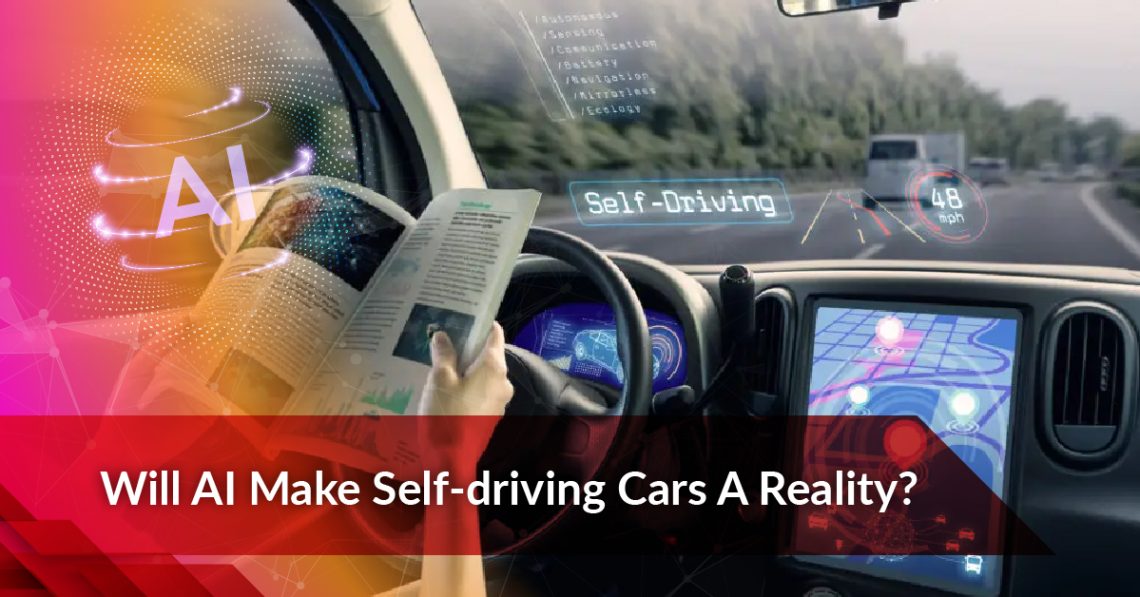The dream of self-driving cars has been around for decades, and recent advances in artificial intelligence (AI) have brought that dream closer to reality. With major companies like Tesla, Google (through its subsidiary Waymo), and traditional automakers heavily investing in AI technologies, self-driving cars are no longer science fiction. But the question remains: Will AI make self-driving cars a widespread reality? Let’s delve into how AI is shaping the future of autonomous vehicles, the challenges that remain, and what we can expect in the years to come.
How AI Powers Self-Driving Cars
At the core of self-driving technology is AI. Specifically, machine learning and deep learning are the key components that allow cars to interpret their surroundings, make decisions, and navigate the complexities of real-world driving. Here’s how AI is transforming vehicles into autonomous systems:
1. Perception: Understanding the Environment
Self-driving cars rely on an array of sensors—cameras, radar, LIDAR, and ultrasonic sensors—to collect data about the environment. However, simply collecting this data isn’t enough. AI, particularly computer vision, helps the car “see” and understand its surroundings. Using deep learning models, the car can identify objects such as pedestrians, other vehicles, traffic signs, and obstacles in real time.
This perception layer is crucial for safe driving, as the AI needs to recognize these objects in a variety of conditions—whether it’s a crowded city street or an empty highway at night. The better the AI can “see” the road, the more effective it will be at avoiding accidents.
2. Decision-Making: Real-Time Responses
Once the vehicle perceives its environment, AI systems are responsible for decision-making. Machine learning algorithms help the car determine what action to take in a given situation—whether to slow down, stop, change lanes, or speed up. This is where reinforcement learning, a branch of AI, comes into play. These algorithms are trained to make optimal decisions through trial and error, learning from millions of miles driven in both real-world and simulated environments.
For example, when approaching a pedestrian crossing or dealing with unpredictable human drivers, the car’s AI must make split-second decisions based on the data it receives. Advanced AI systems are being designed to process this information faster and more accurately than human drivers.
3. Localization and Mapping
Another critical aspect of self-driving technology is localization. Autonomous vehicles must know their exact position on the road. High-definition maps combined with AI-driven GPS systems allow self-driving cars to stay on track, navigate intersections, and follow routes efficiently. AI also enables the car to adapt to changing road conditions, such as detours or construction zones, by recalculating routes in real time.
The Levels of Autonomy
The development of self-driving cars is often categorized into five levels of autonomy, defined by the Society of Automotive Engineers (SAE):
- Level 1: Driver Assistance – Basic driver aids, like adaptive cruise control.
- Level 2: Partial Automation – The car can control steering and acceleration, but the human driver must stay engaged.
- Level 3: Conditional Automation – The car can handle most driving tasks, but human intervention is still required in certain situations.
- Level 4: High Automation – The car can handle all driving tasks in specific conditions (e.g., urban areas), but the human can take over if necessary.
- Level 5: Full Automation – No human intervention is needed at any point.
While some companies, like Tesla, currently offer Level 2 or Level 3 autonomy, Level 4 and Level 5 remain the ultimate goal for a fully autonomous future. AI is the driving force behind this progression, but there are still significant hurdles to achieving full autonomy.
Challenges in Making Self-Driving Cars a Reality
Despite impressive advancements, AI-powered self-driving cars are not yet a widespread reality. Several challenges need to be addressed before we can trust fully autonomous vehicles on our roads.
1. Safety and Reliability
One of the biggest obstacles to widespread adoption is ensuring that self-driving cars are safe in every possible scenario. AI systems are only as good as the data they are trained on, and real-world driving is full of unpredictable variables—bad weather, human error, and rare but dangerous edge cases (e.g., sudden pedestrian movements or malfunctioning traffic signals). AI must learn to handle these scenarios flawlessly to avoid accidents, and any failures could have severe consequences.
2. Regulation and Legal Responsibility
The regulatory environment around autonomous vehicles is still evolving. Laws and standards vary from country to country, and even state to state in places like the U.S. Determining who is responsible in the event of an accident involving a self-driving car is a complex legal question. Is it the manufacturer, the software developer, or the vehicle owner? Governments must create clear regulations before Level 4 or 5 autonomous vehicles can become commonplace on public roads.
3. Ethical Considerations
AI must also navigate ethical dilemmas. In the case of a potential accident, how should an AI decide between minimizing harm to the driver or avoiding pedestrians? These moral questions are difficult to program into machines, and different cultural attitudes may shape how ethical guidelines for AI systems are developed.
4. Public Trust and Acceptance
Another challenge is gaining public trust. While surveys show that consumers are interested in self-driving technology, many are still skeptical about its safety. High-profile accidents involving autonomous vehicles have also heightened concerns. For AI-powered self-driving cars to gain mass acceptance, manufacturers must prove beyond doubt that their systems are safer than human drivers.
5. Technological Infrastructure
Self-driving cars rely on more than just onboard AI systems. They need access to robust infrastructure, such as high-definition maps, 5G networks, and vehicle-to-infrastructure (V2I) communication systems, to function effectively. Many cities and regions do not yet have the necessary infrastructure in place to support widespread use of autonomous vehicles.
The Road Ahead: Will AI Make Self-Driving Cars a Reality?
While fully autonomous cars are not yet mainstream, AI has undoubtedly brought us closer to that reality. The progress made in machine learning, perception technologies, and real-time decision-making has propelled the industry forward. We are already seeing semi-autonomous vehicles on the road, and it is only a matter of time before the technology matures enough for full autonomy.
Several companies, including Tesla, Waymo, and Uber, are running advanced tests and pilot programs with self-driving cars, and many experts believe that Level 4 or even Level 5 vehicles will become available within the next decade. However, the timeline for mass adoption will depend on overcoming the challenges of safety, regulation, public trust, and infrastructure.
Conclusion
AI is undoubtedly the key to unlocking the potential of self-driving cars. With its ability to analyze data, make complex decisions in real-time, and adapt to ever-changing conditions, AI is at the heart of autonomous vehicle technology. However, while the future of self-driving cars looks promising, there are still significant hurdles to overcome before they can become a widespread reality.
As AI continues to evolve, and as regulations and infrastructure catch up, we may soon see the day when autonomous vehicles are as common as smartphones. Until then, the road to full autonomy remains under construction, but AI will be driving the effort every step of the way.
Are you ready to dive deeper into the topics you love? Visit our website and discover a treasure trove of articles, tips, and insights tailored just for you!





